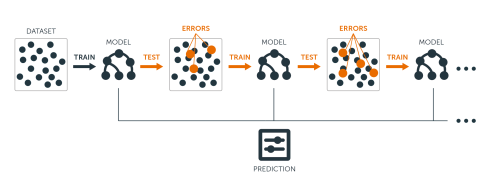
Gradient Boosting Machines (GBMs) are a powerful machine learning technique that is widely used for predictive modeling and classification tasks. GBMs work by combining multiple decision trees to create an ensemble model that can produce highly accurate results.
What is Gradient Boosting Machines (GBMs)?
GBMs are similar to Random Forests, but instead of combining the predictions of many decision trees, GBMs build trees iteratively, with each tree trying to improve upon the previous tree's errors. This process of creating an ensemble of decision trees leads to a more robust and accurate model, with less bias and variance.
GBMs are known for their ability to handle a wide range of data types, including categorical, continuous, and even missing data. They are also capable of handling large datasets with millions of data points, making them suitable for big data applications.
Benefits
One of the main benefits of GBMs is their ability to learn complex non-linear relationships between input variables and output variables. This is achieved by using a loss function that measures the difference between the predicted and actual values, and optimizing the parameters of the model to minimize this loss.
GBMs also allow for feature selection, which means that they can identify the most important variables that contribute to the outcome of the model. This helps to reduce the complexity of the model and improve its interpretability.
Applications
GBMs have a wide range of applications, including finance, healthcare, marketing, and more. They can be used for predicting customer behavior, detecting fraud, and analyzing large amounts of data.
1- Prediction in the finance sector: GBMs can be used to predict market trends and forecast stock prices based on historical data. GBMs can also be used to detect fraud by analyzing patterns in transactional data.
2- Recommendation systems: GBMs can be used to create highly accurate recommendation systems. For example, GBMs can analyze user behavior to recommend products or services that are most likely to be of interest to the user.
3- Medical diagnosis: GBMs can be used to analyze medical data and aid in the diagnosis of diseases. By analyzing patient data, GBMs can predict the likelihood of a particular disease or condition, and identify risk factors.
4- Natural Language Processing (NLP): GBMs can be used to build models that analyze and interpret large volumes of text data, including sentiment analysis, topic modeling, and text classification.
5- Autonomous vehicles: GBMs can be used to develop machine learning models that can recognize objects in real-time, which is essential for developing autonomous vehicles. By analyzing sensor data, GBMs can detect objects on the road, such as other vehicles or pedestrians, and make appropriate decisions to avoid collisions.
However, it is important to note that GBMs can be computationally intensive and may require a lot of tuning to achieve the best results. It is also important to carefully evaluate the results and consider potential biases or ethical concerns that may arise when using GBMs.
Code Example
import pandas as pd
from sklearn.model_selection import train_test_split
from sklearn.ensemble import GradientBoostingClassifier
from sklearn.metrics import accuracy_score
# Load the wine quality dataset
df = pd.read_csv('https://archive.ics.uci.edu/ml/machine-learning-databases/wine-quality/winequality-red.csv',
delimiter=';')
# Split the dataset into training and testing sets
X = df.iloc[:, :-1]
y = df.iloc[:, -1]
X_train, X_test, y_train, y_test = train_test_split(X, y,
test_size=0.2, random_state=42)
# Train a Gradient Boosting classifier
clf = GradientBoostingClassifier(n_estimators=100,
learning_rate=1.0, max_depth=1, random_state=42)
clf.fit(X_train, y_train)
# Make predictions on the test set
y_pred = clf.predict(X_test)
# Evaluate the accuracy of the classifier
accuracy = accuracy_score(y_test, y_pred)
print('Accuracy:', accuracy)
In this example, we use the wine quality dataset from the UCI Machine Learning Repository, which contains 11 features of red wines and a quality score between 0 and 10. We split the dataset into training and testing sets, and train a Gradient Boosting classifier with 100 estimators, a learning rate of 1.0, and a maximum depth of 1. We then make predictions on the test set and evaluate the accuracy of the classifier using the accuracy_score function from scikit-learn.
Conclusion
In conclusion, Gradient Boosting Machines are a powerful and versatile machine learning technique that can produce highly accurate models for a wide range of applications. With their ability to handle complex non-linear relationships and feature selection capabilities, GBMs are a valuable tool for data scientists and businesses alike.